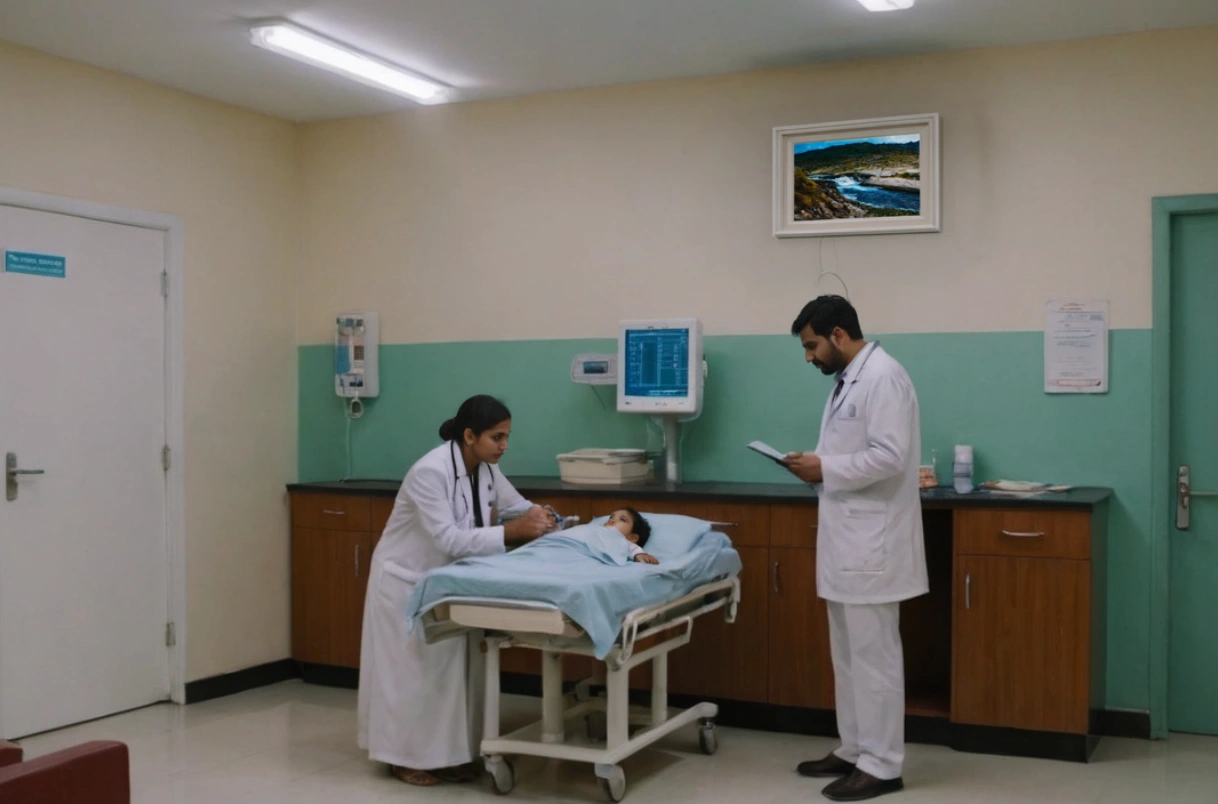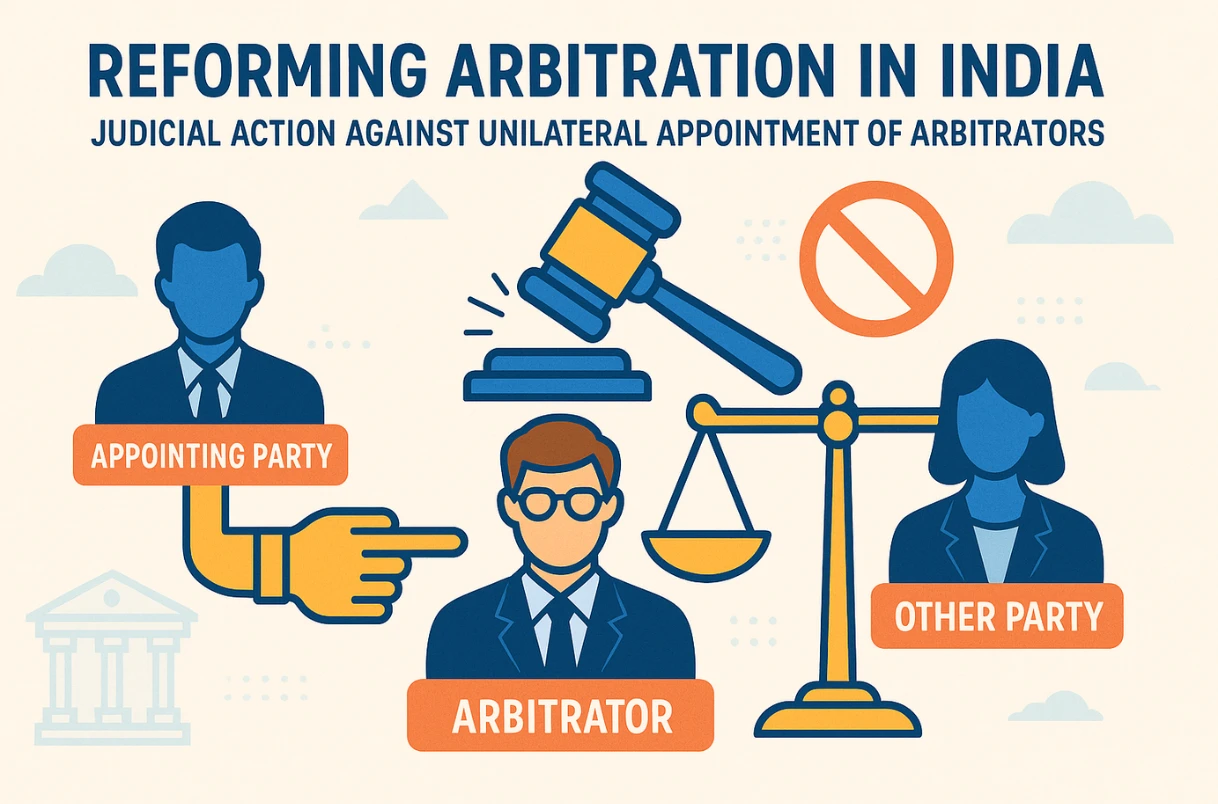India’s Rare Disease Drug Access: Legal & Policy Hurdles (Part II)

By – Devank Maheshwari and Ishita Dhir
Table of Contents
Approach of Indian judiciary towards orphan drugs and treatment of rare diseases
In light of the challenges associated with the treatment of rare diseases discussed in Part I of this article, particularly the prohibitively high costs of orphan drugs, patients have turned to the High Courts, invoking their writ jurisdiction to secure access to medicines for rare diseases in India.
In the Delhi High Court alone, over 100 patients afflicted with rare diseases have filed writ petitions, seeking financial assistance for orphan drugs. On October 4, 2024, the Delhi High Court delivered a landmark judgment in W.P.(C) 5315/2020 & connected matters, outlining a number of significant directions to the government in this regard.
The Court emphasized that the ‘Right to Health and Healthcare’ is a Fundamental Right, as affirmed by the Supreme Court, and is encompassed within the ‘Right to Life’ under Article 21 of the Constitution. Therefore, the prohibitive costs of orphan drugs should not obstruct the access to treatment for individuals suffering from rare diseases.
Key Observations and Directions Issued by the Delhi High Court
Equality in Healthcare Access
Right to Health, as etched under the Right to Life in Article 21 of the Constitution of India cannot distinguish between persons with more prevalent diseases on one hand and rare diseases on the other hand. To discriminate between patients suffering from more prevalent diseases, and those who suffer from rare diseases would also be discriminatory and violative of Article 14 of the Constitution of India.
Resource Constraints Not a Justification
Right to Health and Healthcare cannot be completely negated due to the resource constraints. The country ought to strive to provide adequate healthcare to persons with rare diseases within the available limitations and in the best possible manner.
Flexibility in Financial Ceiling
Considering that the ceiling of Rs. 50 lakhs of financial support under NPRD would be inadequate in a number of circumstances, this ceiling must be kept flexible and should be left to the decision of experts in the National Rare Diseases’ Committee (“NRDC”).
Mandate to the NRDC
The Committee being the expert committee ought to decide on the appropriate treatment, to what extent it should be provided, and in what form.
Extension of NRDC’s Term
Continuation of the functioning of the NRDC, constituted vide order dated 15.05.2023, for a further period of 5 years. It will have the responsibility to oversee the treatment of rare diseases in the country including monitoring and provision of guidance, continued recognition of rare diseases, procurement of drugs at reasonable prices, negotiation of prices of orphan drugs with pharmaceutical companies, indigenous development of orphan drugs in India, etc.
Creation of National Fund for Rare Diseases (NFRD)
Establishment of National Fund for Rare Diseases (“NFRD”) with a total outlay of Rs. 974 crores for the financial years 2024-25, 2025-26 and allocation of the same or a higher amount for the next two financial years.
Funding Flexibility to Centres of Excellence
No ceiling shall be imposed for funding of individual CoEs.
Information Accessibility
Operationalization of a National Rare Disease Information Portal for the benefit of patients, doctors, and the general public.
Tax and Import Relief Measures
Issuance of waivers for customs, GST, and income tax on imports of rare disease medicines within 30 days.
CSR and Donations
Donations for rare diseases to be eligible under CSR spending.
Fast-Track Approvals
Creation of a dedicated fast-track approval process for rare disease drugs and therapies.
Drug Pricing Review
The Drugs Controller General of India (“DCGI”) and the Central Drugs Standard Control Organization (“CDSCO”) shall coordinate on the issue whether orphan drugs for the treatment of rare diseases ought to be regulated under the Drug Price Control Order, 2013 (“DPCO”) and exemption of orphan drugs from price control to be reviewed at the earliest.
Insurance Policy Reforms
The Insurance Regulatory and Development Authority of India (“IRDAI”) to comprehensively re-look into exclusion criteria in relation to genetic disorders in health insurance contracts.
Obligations on Pharma Companies:
Pharma companies shall ensure the adequate availability of therapies and medicines in India for rare diseases, whether through manufacturing or imports. Such companies shall provide the therapies at the price agreed with the NRDC.
Kerala High Court Intervention
In a notable ruling dated February 6, 2025, the Kerala High Court issued an order in WA No. 216/2025, instructing the Union of India to supply medication valued at Rs. 18 lakhs for a rare disease to a patient diagnosed with Spinal Muscular Atrophy as a one-time measure.
Supreme Court Stay on High Court Orders
It is, however, important to mention that in a significant turn of events, both the abovementioned orders passed by the Delhi High Court and the Kerala High Court have been stayed by the Supreme Court in terms of its orders dated 09.12.2024 in SLP No. 28777/2024 and order dated 24.02.2025 in SLP No. 4684/2025, respectively.
The appeals against the orders of the Delhi High Court and the Kerala High Court are currently pending before the Supreme Court.
In terms of order dated 24.02.2024, the Supreme Court however observed that the government may examine requests for financial assistance made by the patient and that the pharma companies may be approached to enable supply of the drug in question to enable economical treatment of the patients suffering from Spinal Muscular Atrophy.
Recommendations and Way Forward
In the context of the abovementioned stay orders passed by the Supreme Court, it is important to mention that the above orders have also stayed the direction of the Kerala High Court to release financial assistance to the patient and the observation of the Delhi High Court that the Rs. 50 lakh limit under the National Policy for Rare Diseases should not be strictly imposed.
This has essentially turned the clock backwards for the litigants suffering from rare diseases, placing the issue of access to orphan drugs and financial support from the government in a state of jeopardy.
Opportunity for Judicial Clarification
However, it is now clear that the various issues involved in the treatment of rare diseases, particularly access to reasonably priced drugs and financial support by the Central Government (dealt with in detail by the Delhi High Court) are before the Supreme Court for its consideration.
Rather than looking at the same as a setback, it must be seen as an opportunity before the Supreme Court to clarify the contours of Right to Heath inherent in Right to Life under Article 21 of the Indian Constitution.
Although the Supreme Court in a catena of judgments has provided that the right to health would be a part of the right to life, such judgments do not delve deep into the specific contours of right to health and to what extent this right would be enforceable against the state.
Enforceability of Socio-Economic Rights
It is widely recognized that although the Supreme Court has consistently expanded the scope of Article 21 to include various claims such as right to food, shelter, clean environment etc., it has not adopted a consistent standard for specific recognition and enforcement standards of such socio-economic rights.
It must be recognized that the Supreme Court has been presented with an opportunity to define the specific coverage of right to health, which, hitherto, has meant very little in practice. The right to health including the rights of persons with rare diseases, should not remain a mere paper tiger.
Balancing Rights and Fiscal Considerations
Similarly, it would also be important for the Supreme Court to make affirmative pronouncements with respect to the issue of balancing between fundamental rights, specifically right to health and the competing fiscal considerations of the state.
In a developing country like India, wherein there are fiercely contested clams over limited resources, it becomes important to clarify whether denial of complete (or at least substantial) funding would be violative of the sacrosanct right to life under Article 21.
In the case of access to orphan drugs which will have wide ranging ramifications on the public health scenario as well as state finances in India, the need of the hour is more exacting judicial review to be exercised by the Supreme Court in order to safeguard the right to life.
It is essential to create a rights-based mechanism in order to safeguard the rights of patients with rare diseases, especially considering that children and young people make up a large chunk of this group.
It is essential that within the umbrella of right to health, a ‘minimum core or threshold’ must be specified by the Supreme Court that should be considered as non-negotiable.
Targeted Support and Fair Identification
As far as the issue of public spending and resource constraints is concerned, it is necessary that the government devise more rigorous standards for identification of beneficiaries and targeted delivery of financial support in order to ensure that only those patients who are unable to afford the orphan drugs are given the benefit.
In this context, a one size fit all approach would not be feasible and the issue of financial support may be decided on a case by case basis considering the economic capacity of the patients.
Price Negotiation and Incentives
With respect to the issue of exorbitant pricing of the orphan drugs, it is essential that the government make concerted efforts in negotiating reasonable pricing of the same by the pharma companies.
Appropriate financial and fiscal incentives such as tax waivers, budgetary support in research and development and setting up of manufacturing facilities must be explored.
Use of Patent Law Tools
Within the context of the issues pertaining to patents, it must be noted that mere engagement with pharmaceutical companies and a moral-suasion approach may not yield the desired results.
It is essential that the government utilize all the avenues available under the Patents Act, 1970 to ensure affordable access to orphan drugs.
Compulsory Licensing (Section 84)
Considering the extent of the problem of ensuring access to reasonably priced orphan drugs, it is imperative for government to explore the option of compulsory licensing under Section 84 of the Patents Act. In the case of compulsory licensing, a third party, not being the patent holder, is authorized by the government to manufacture and sell patented products. It is granted in the situations wherein the requirements of the public are not satisfied, and the patented product is not available at affordable prices.
Government Use (Section 100)
Similarly, in terms of Section 100 of the Patents Act, the government is empowered to use the patented product for government use, and permit manufacturing by a third party subject to payment of royalty to the patentee.
Patent Acquisition (Section 102)
Additionally, the government can also take the route under Section 102 of the Patents Act that allows for the government to acquire the patents from a patentee for public purpose.
Regulatory Reforms and CSR Support
In the same vein, it is also recommended that a major policy reconsideration is essential to include the orphan drugs in the DPCO so that exorbitant prices are not charged by the pharma companies.
Similarly, the companies, especially the pharma companies, must be incentivized to make corporate contributions under the CSR towards supplementing the initiatives by the government to provide financial support to the patients of rare diseases.
Apart from that, IRDAI ought to take into consideration the exclusion of rare diseases from the purview of insurance policies. These steps could go a long way towards ensuring that the orphan drugs are accessible to the patients without creating severe financial prejudice.
Call for Dedicated Legislation
The need of the hour is a dedicated legislation that guarantees access to orphan drugs and rare disease treatment as a legal right, rather than leaving it to policy discretion or charitable assistance.
Such a law must include enforceable provisions mandating price regulation, compulsory licensing for unaffordable drugs, and government-funded treatment support.
Additionally, a robust redressal mechanism should be established, enabling patients to seek legal recourse if they are denied access to life-saving medicines.
Just as the right to education and right to food have been recognized through legislative frameworks, the right to health and specifically, access to rare disease treatment—must be codified into law to ensure that no patient is left behind due to financial constraints.
Learning from International Models
In this context, it would be a good idea to enact a dedicated legislation such as the Orphan Drug Act, 1983 in the US that incentivizes the development of drugs for rare diseases by offering incentives like tax credits, government research grants, fast track approval process and market exclusivity.
Another significant feature is the access available to patients to experimental treatments.
Similarly, another US legislation i.e., the Affordable Care Act, 2010 has mandated the insurance companies to not deny coverage or charge higher premiums based on pre-existing conditions, including rare diseases.
If implemented in India, it would go a long way to ensure that individuals with chronic or rare illnesses can obtain health insurance.
Conclusion
In conclusion, it can be said that ensuring access to affordable medicines for rare diseases is not just a policy challenge but a legal and ethical imperative.
While the current framework in India has significant gaps, there is hope for meaningful reform through stronger legal interventions, enhanced government support, and increased domestic production of orphan drugs.
Proactive legislative measures as suggested above, can pave the way for a more equitable system in which life-saving treatments are within reach of all patients, regardless of economic status.
FAQs
-
What is the legal status of the right to health in India?
The right to health in India has been judicially recognized as a fundamental right under Article 21 of the Constitution, which guarantees the right to life. Although not explicitly mentioned in the constitutional text, the Supreme Court has consistently held through various decisions that the right to life encompasses access to basic healthcare services. However, this recognition has largely remained interpretative rather than legislative, and the lack of a codified framework has made the enforceability of the right to health, particularly for vulnerable groups like rare disease patients, limited and inconsistent in practice.
-
How have Indian courts ruled on access to orphan drugs?
Indian courts have played a proactive role in recognizing the right of rare disease patients to access life-saving orphan drugs, despite their high costs. In a landmark judgment delivered by the Delhi High Court in October 2024, the court held that the right to health, as part of the right to life under Article 21, must be extended equally to those suffering from rare diseases. It directed the government to consider flexibility in the financial ceiling for treatment and emphasized the need for structural measures such as price regulation and indigenous development of orphan drugs. The Kerala High Court also passed a notable ruling mandating the supply of an expensive drug for Spinal Muscular Atrophy. However, both these decisions were stayed by the Supreme Court, leaving the matter open for further judicial determination.
-
What is the National Rare Disease Committee (NRDC)?
The NRDC is an expert body constituted by the government to guide the implementation of the National Policy for Rare Diseases, 2021. It is responsible for:
Recommending treatments for rare disease patients,
Deciding financial assistance on a case-by-case basis,
Guiding drug procurement and pricing negotiations,
Overseeing indigenous development of orphan drugs.
The Delhi High Court directed the continuation of NRDC for five years to ensure sustained institutional oversight. -
What are the Supreme Court’s views on rare disease funding?
The National Rare Disease Committee (NRDC) is an expert body constituted by the Government of India to oversee the implementation of the National Policy for Rare Diseases, 2021. Its responsibilities include recommending appropriate treatments, determining financial support on a case-by-case basis, facilitating procurement and pricing negotiations for orphan drugs, and encouraging domestic research and development. Recognizing the committee’s critical role, the Delhi High Court directed its continuation for an additional five years to ensure sustained institutional oversight and strategic decision-making in addressing the needs of rare disease patients.
-
What is compulsory licensing under the Patents Act?
Compulsory licensing under the Patents Act, 1970, is a legal provision that empowers the Indian government to authorize third parties to manufacture and sell patented drugs without the consent of the patent holder, particularly when the public’s needs are not being adequately met or when the drug is priced beyond the reach of most patients. It is intended as a tool to ensure access to essential medicines, including orphan drugs, in cases where voluntary negotiations with pharmaceutical companies fail. In addition to compulsory licensing under Section 84, Sections 100 and 102 of the Act also provide for government use and acquisition of patents for public purposes, respectively, making the law a potentially powerful instrument for ensuring equitable access to life-saving treatments.
-
How can India ensure affordable orphan drug access?
Ensuring affordable access to orphan drugs in India requires a multi-faceted approach that combines legal, policy, and institutional measures. The government must engage in direct negotiations with pharmaceutical companies to lower drug prices, offer incentives for local manufacturing and research, and ensure that financial assistance is targeted to patients based on economic need. Additionally, a rights-based framework is necessary to move beyond the limitations of discretionary policymaking. The use of tools like compulsory licensing, tax exemptions, and the inclusion of orphan drugs in regulatory price control mechanisms must be accompanied by transparent implementation, sustained funding, and effective oversight to make treatment genuinely accessible to patients across economic backgrounds.
-
Should India enact a dedicated Orphan Drug Act?
There is a compelling case for India to enact a dedicated Orphan Drug Act, similar to the Orphan Drug Act of 1983 in the United States, which offers incentives such as tax credits, grants, market exclusivity, and fast-track regulatory approvals to promote the development of treatments for rare diseases. Such legislation would shift the issue from a policy-based to a rights-based domain by mandating access, affordability, and research support for orphan drugs. It would also provide a statutory framework for enabling experimental treatments, regulating drug prices, and holding stakeholders accountable. Enacting such a law would be a critical step toward addressing the systemic gaps that currently hinder equitable access to care for rare disease patients.
-
What role does IRDAI play in rare disease insurance coverage?
The Insurance Regulatory and Development Authority of India (IRDAI) plays a pivotal role in shaping the landscape of health insurance coverage in the country. In the context of rare diseases, courts have urged IRDAI to revisit the exclusion clauses that deny insurance coverage for genetic disorders. If IRDAI mandates the inclusion of rare diseases in standard health insurance policies and prohibits discriminatory premium structures, it could significantly expand financial protection for patients. A regulatory push by IRDAI to standardize coverage and remove unjust exclusions would help integrate private insurance into the broader ecosystem of rare disease support, reducing the sole burden on public funding mechanisms.
References
- Press Release
- Digital Portal for Crowdfunding & Voluntary donations for Patients of Rare Diseases
- Article: India’s fight against rare diseases
- Lok Sabha Unstarred Question No. 701
- Press Release


